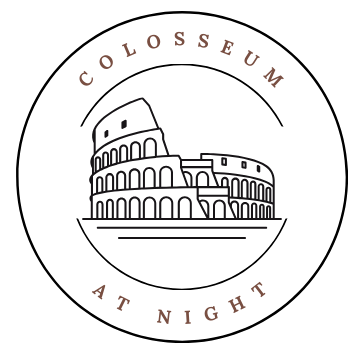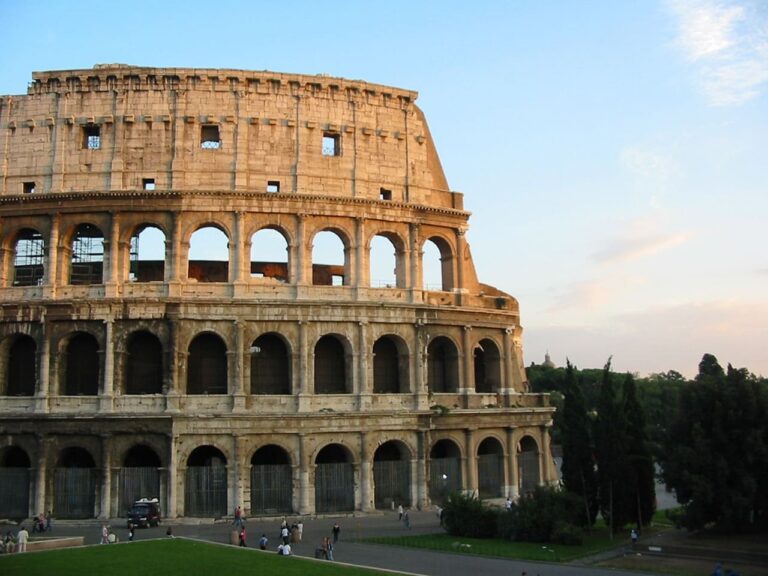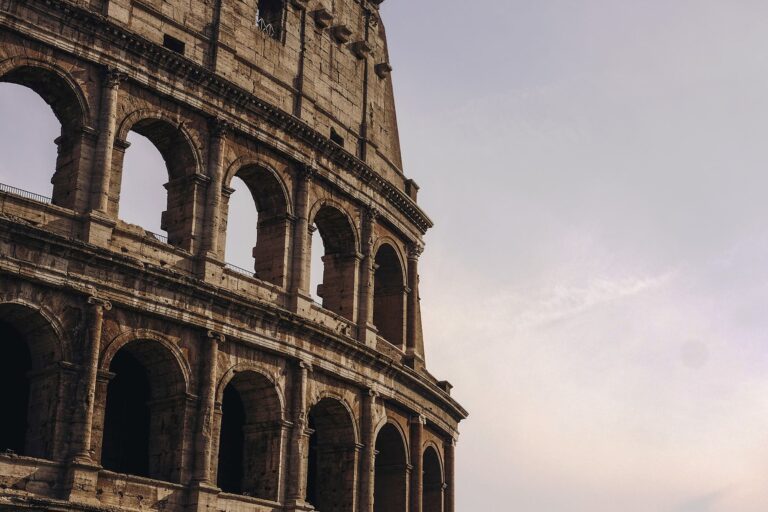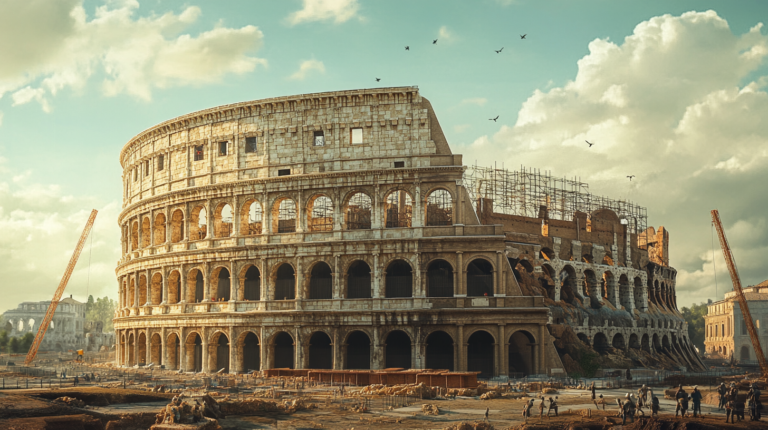Did the Romans Fill the Colosseum with Water?
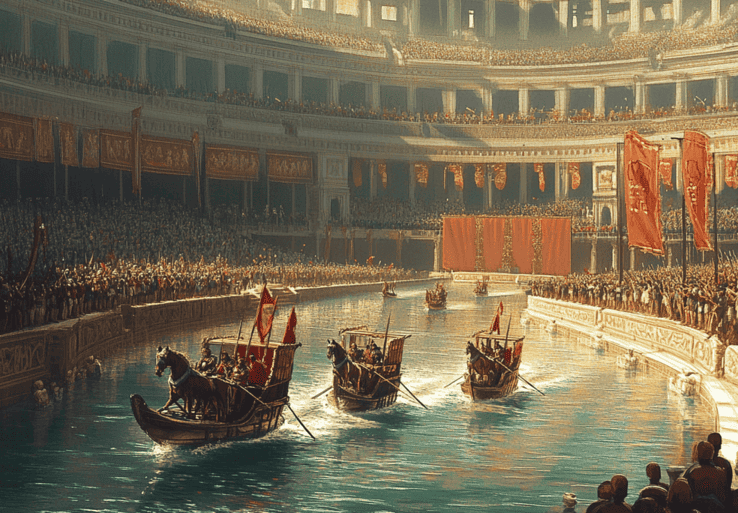
The idea that the Romans used the Colosseum for naval battles, or naumachiae, is fascinating. This massive amphitheater is mostly known for gladiator fights, yet one question often arises: Did the Romans Fill the Colosseum with Water to host these ship battles? Although evidence of such large-scale aquatic events in the Roman Colosseum is scarce, it’s clear that the Romans loved grand water shows. These spectacles, if they did occur, probably happened less often than many believe, but the notion of transforming the arena into a temporary “sea” continues to intrigue historians and visitors alike.
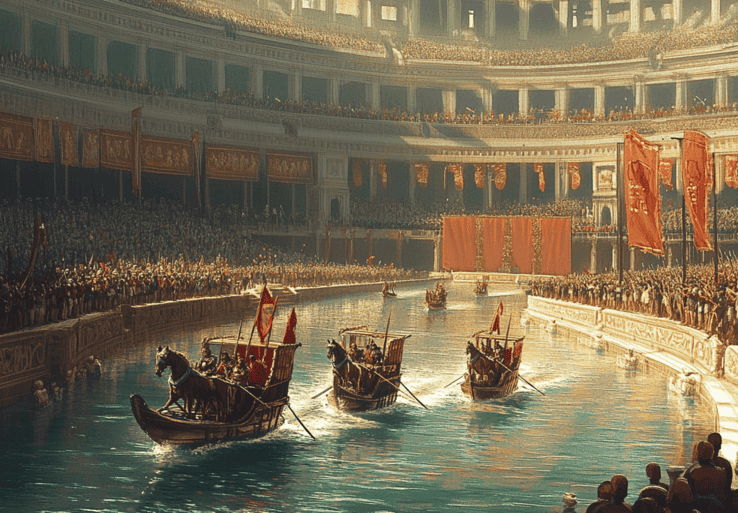
Key Takeaways
- Romans are believed to have staged naval battles, or naumachiae, in water-filled arenas.
- The Colosseum is mostly known for gladiatorial combats, but there is evidence suggesting water-based events were possible.
- Scholarly debate continues regarding the extent and frequency of such events in the Colosseum.
- Evidence indicates the Romans had the capability to create elaborate water spectacles.
- Popular imagination often exaggerates the frequency of these events in the Colosseum.
The Concept of Naumachiae in Ancient Rome
The naumachiae were a special type of ancient Rome entertainment. These were simulated naval battles. They entertained people and showed Rome’s sea power. These battles started in the Roman Empire’s golden age. They showed Rome’s control of the seas and military strength.
The Origin of Naumachiae
Julius Caesar started the naumachiae. He held these big naval shows to celebrate his wins. By making arenas or using natural waters, he made huge battle reenactments. These amazed everyone and showed his ruling power.
The Meaning Behind Naumachiae
Naumachiae were more than just fun. They showed Rome’s clever politics and cultural depth. By replaying old sea battles, they remembered victories and honored warriors. At the same time, they boosted the emperor’s reputation. He appeared strong and kind, able to fund such big shows. Naumachiae proved Rome’s lasting impact in war and culture.
Early Instances of Naumachiae
Naumachiae, or mock naval battles, were grand shows in ancient Rome. They highlighted the power of the empire. Julius Caesar and Augustus made these events popular. They hosted huge water battles for the public.
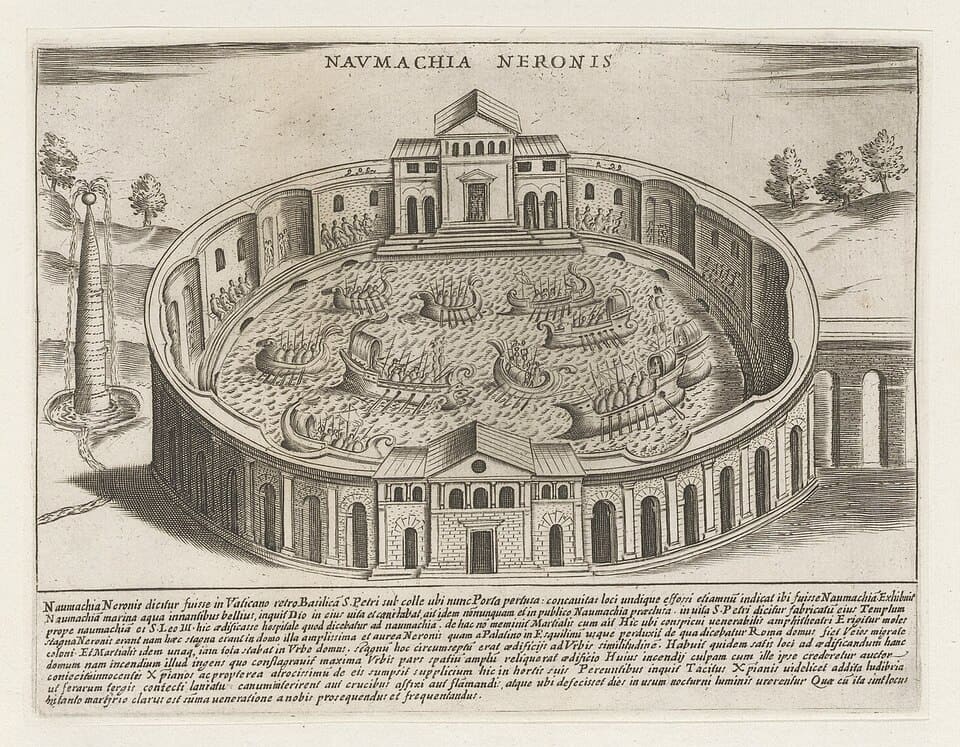
Julius Caesar’s First Naumachia
In 46 BC, Julius Caesar held the first naumachia. It was to mark his victories in Gaul. The battle occurred in a big basin on the Campus Martius. Many people, including prisoners and slaves, fought in these staged naval wars.
The event was more than a battle. It showed Caesar’s immense power and wealth. It left a strong impression on the people of Rome.
Augustus’ Celebratory Naumachia
Augustus held a naumachia in 2 BC. It was even grander than Caesar’s. He did it to dedicate the Temple of Mars Ultor. This event included large fleets and many fighters.
It highlighted the Roman Empire’s strength under Augustus. It celebrated his rule. Plus, it continued the tradition of Roman naval battles for public fun.
How Naumachiae Were Staged
Staging naumachiae in ancient Rome was a massive show of power. It showed off the empire’s great engineering and planning skills. These events were huge, needing lots of planning and coordination.
Logistics and Challenges
One big challenge was making or finding big enough water areas. Romans had to turn arenas into lakes or use big water spaces. Getting enough water, usually from aqueducts, was key to fill the arena.
Role of Condemned Prisoners
Condemned prisoners or slaves were often the fighters. They entertained but also reminded everyone of Roman strength. They had to learn how to run the ancient Roman ships. This made the battles seem more real.
Use of Scaled-Down Ships
The Romans used smaller ships to fit in arenas and water basins. These ships were easier to control and looked better for the shows. This smart move let Romans stage big battles right in the city.
Did the Romans Fill the Colosseum with Water
Have you ever wondered if the Romans turned the Colosseum into a pool for boat battles? These battles, called naumachiae, were amazing shows. They displayed Rome’s engineering skills and its empire’s power.
Evidence of Water-Based Events
Some clues suggest the Colosseum hosted these water shows. The historian Cassius Dio wrote about the arena being flooded for big events. Also, archaeologists found old water channels in the building. Yet, these water shows were probably not common due to their complexity.
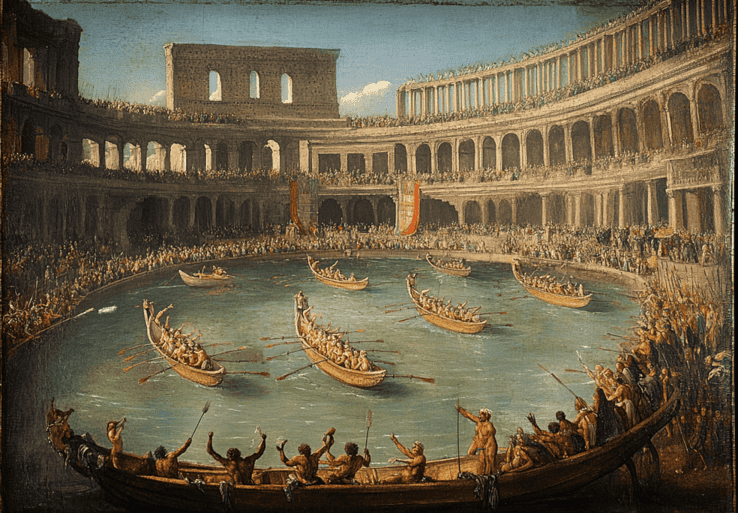
Documented Instances and Historical Records
Records talk about when the Colosseum hosted these water battles. Yet, how the Romans filled it with water is still debated by experts. The work to switch the Colosseum from a battle stage to a water venue was amazing. It shows the Romans’ skill and the effort they put into their shows.
Famous Roman Naumachiae Events
Roman naumachiae were stunning. Some events stand out for their size and how they were done. These famous naumachiae showed the Romans’ engineering skills. They also gave a peek into the leaders’ imperial dreams.
Claudius’ Spectacle on Fucian Lake
In 52 AD, Claudius put on a huge show on Fucian Lake. It had about 19,000 people participating. This event on a lake showed the emperor’s skill in organizing big events for entertainment.
Nero’s Amphitheater-Based Naumachia
Nero, known for his flair, changed naumachiae by building a special amphitheater. His impressive setups gave audiences amazing shows. This boosted his image as a leader who loved big public events.
Titus’ Naumachia in the Colosseum
A unique event in the Colosseum was put on by Titus. It showed how flexible the famous building was. The Colosseum was changed to mimic sea battles, showing off Roman engineering. It amazed the viewers.
The Role of the Colosseum in Naumachiae
The Colosseum is a wonder from ancient times, mostly known for gladiator fights. But, evidence shows it was also set up for naumachiae, or mock sea battles. This shows how versatile and grand the Colosseum really was.
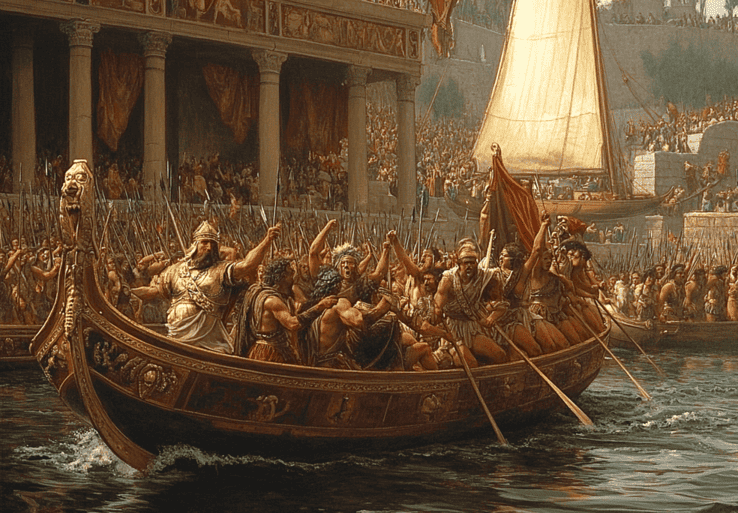
Architectural Adjustments
The Colosseum had to change a lot to hold these amazing water shows. Changes included adding intricate water systems and making a basin that didn’t leak. Cassius Dio, an ancient writer, talked about how quickly the arena could turn into a lake. This was likely done with aqueducts and water gates to handle the huge amount of water needed, keeping the Colosseum useful for different events.
Frequency of Events
Even though naumachiae were spectacular, they didn’t happen often. The effort to set up the Colosseum for these battles was huge. It took weeks of planning and a lot of work and resources. That’s why these sea battles were for very special events, like celebrating big wins. But when they did happen, they showed off Roman engineering skill and their love for grand shows.
The Spectator Experience
The naumachiae were both awe-inspiring and brutal, mesmerizing Roman entertainment seekers. They featured staged sea battles and grand naval shows to wow and entertain the crowd.
Public Reception
The public loved naumachiae, seeing them as thrilling Roman entertainment. People looked forward to these events. They enjoyed watching historic and mythical battles come to life with realistic ships and props.
Spectacular Elements
Naumachiae’s scale and realism were stunning. Using real water and ships, they offered an immersive show. The performances included amazing choreography and effects, leaving a strong impact.
The stories told were dramatic, and the battles were intense. This made the spectacles even more memorable for the audience.
Safety Concerns and Casualties
However, Colosseum events could be dangerous. The scale of these shows sometimes resulted in spectator injuries from structural issues or storms. These problems highlighted the risks of Roman public spectacles. The excitement was sometimes overshadowed by tragic accidents.
Decline of Naumachiae
The spectacular naumachiae, once key to Roman fun, began to fade away. They faced many problems that led to their fall.
Factors Leading to Decline
Roman traditions changed, affecting naumachiae’s popularity. New entertainment forms made these grand sea battles less appealing.
Economic and Logistical Challenges
Economic and logistical issues were huge. Flooding arenas and making ships was expensive. It was too costly for the empire.
Organizing these events was also hard. It was tough to get enough water and train fighters. As resources dropped, naumachiae’s splendor faded.
Historical Records and Accounts
Many historical documents and materials show our fascination with naumachiae. They tell us vivid stories of these incredible shows.
Roman sources and archaeological findings give a clear picture of the events. They show how grand they really were.
Primary Sources
Roman writings offer deep insights into naumachiae. They reveal their cultural importance. Writers like Cassius Dio and Suetonius bring these sea battles to life. They write about the events’ grandeur.
These accounts show how Roman emperors aimed to dazzle their people. They went to great lengths to organize these spectacles. This helps us understand naumachiae’s impact on society.
Archaeological Evidence
Archaeology also helps us understand naumachiae. By studying old arenas and ship remains, we learn more.
For example, changes in the Colosseum show how Romans staged these battles. Water channels and basins found there match descriptions in texts.
This evidence connects historical stories with actual places. It makes our picture of Roman sea battles more complete.
Modern Interpretations and Misconceptions
Today, the way we see naumachiae, or Roman naval battles, differs a lot from the truth. This difference comes mainly from media representation. It makes these battles seem bigger and more common than they were.
Representation in Media
Movies and TV shows often show naumachiae as huge events that happened all the time. They use big special effects. But history tells us these battles were rare and meant for special celebrations. Media representation leads to many misconceptions about naumachiae.
Common Myths and Confusions
There are many wrong beliefs about naumachiae. For example, some people think the Romans always filled the Colosseum with water for these shows. Yet, historical evidence says this wasn’t common. These mistakes not only give the wrong idea. They also hide the true planning and importance of naumachiae. To fix these misconceptions about naumachiae, we must look at both historical texts and archaeological finds.
Legacy of Roman Naumachiae
The grand tradition of Roman naumachiae has a lasting legacy. It reaches far beyond the days of the Colosseum. These naval battles showed off Roman engineering. They also left a deep cultural influence that is still felt today.
Influence on Later Cultures
The idea of big, water battles went on to influence later cultures. You can see this in art and entertainment. For example, Renaissance festivals often had mock naval battles inspired by Roman naumachiae.
This lasting legacy lives on today in naval-themed shows and events. They show our continuing interest in sea battles, just like the ones that amazed ancient Romans.
Modern-Day Reenactments
Today, historical reenactments let us see the past’s splendor. Events at historical sites and in the media teach us about Roman entertainment’s creativity. These reenactments pay tribute to the original naumachiae. They also highlight their ongoing cultural influence, keeping a fascinating history alive for the future.
Conclusion
Roman naval battles, or naumachiae, show us the Roman Empire loved big and complex shows. These events, like making the Colosseum into a giant pool, were not as common as we think. But, they prove the Romans were great at making unforgettable shows with lots of drama and smart planning.
When we look into the Colosseum and how it was built, we see the power and harshness of ancient Rome. The Colosseum was more than just a battle arena. It could also hold big water shows. The effort to arrange these, with smaller ships and using prisoners, shows how complex it was to put on these events.
Today, Roman naval battles don’t draw crowds like before, but their impact lasts. The Colosseum remains a symbol of Rome’s creative spirit and love for luxury. Naumachiae may have been a small part of Roman entertainment, but they keep fascinating historians and inspire people today. They help us remember the vast and rich history of Rome.
FAQ
Did the Romans fill the Colosseum with water?
Yes, the Romans sometimes filled the Colosseum with water for naval battles. But, this was rare and took a lot of work.
What was the Colosseum primarily used for?
The Colosseum hosted gladiator fights and public shows like animal hunts. Also, executions and mythology-based dramas took place there. Naval battles happened, but not as often.
How did the Romans fill the Colosseum with water for naval battles?
They used a complex system of aqueducts and canals. This setup allowed the arena to be flooded for those big events.
What was the concept of naumachiae in ancient Rome?
Naumachiae were big sea battle shows. They were for fun and to show Rome’s power. They celebrated big military wins at sea.
What is the origin of naumachiae?
Julius Caesar started naumachiae in 46 BC. He did it to celebrate his Gaul victories.
Why were naumachiae significant in ancient Rome?
They showed off Rome’s sea power and remembered military wins. These events entertained people and highlighted Roman greatness.
How were naumachiae staged?
It took a lot of planning. They built special pools and used smaller ships. Fighters were often prisoners or people who had been sentenced to die.
Who participated in these naval battles?
Mainly prisoners or doomed criminals fought. They had little training. This made the fights very real and harsh.
Did the Colosseum host other water-based events?
Yes, but those were rare. They needed big changes to the structure and careful planning.
What were some famous Roman naumachiae events?
Big ones were by Claudius on Fucian Lake with 19,000 men, Nero’s in an amphitheater, and another by Titus in the Colosseum.
How often did the Colosseum undergo modifications for naumachiae?
Not often, because it took a lot of effort and materials. These events were for special occasions.
Were there any safety concerns for spectators during naumachiae?
Yes, these events could be risky for everyone. Bad weather or building issues could hurt spectators. This danger was part of the excitement.
What led to the decline of naumachiae in ancient Rome?
High costs and big challenges made them less common. Eventually, they stopped because of these difficulties.
What sources provide information on naumachiae?
Writers like Cassius Dio and Suetonius, plus archaeological finds help us learn about naumachiae.
How are naumachiae represented in modern media?
Today, stories and shows often exaggerate these events. They make them seem bigger and more common than they were.
What is the legacy of Roman naumachiae?
Their impact goes beyond the Roman era. They’ve influenced how naval battles are seen and reenacted today. These showcases displayed Roman creativity and event management.
